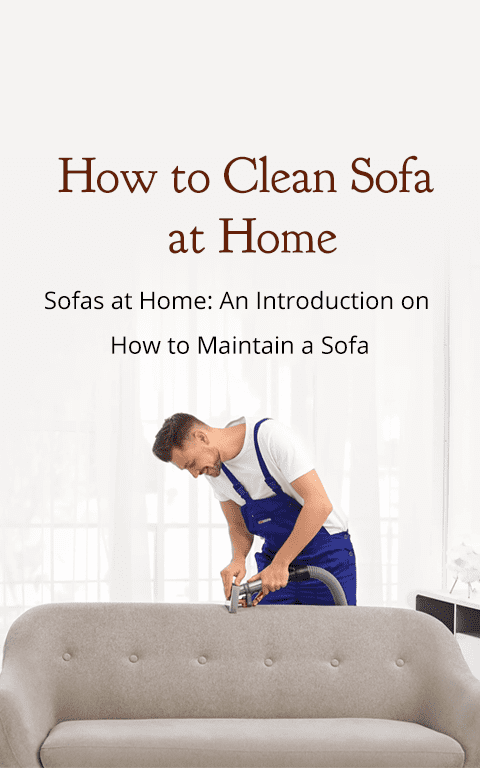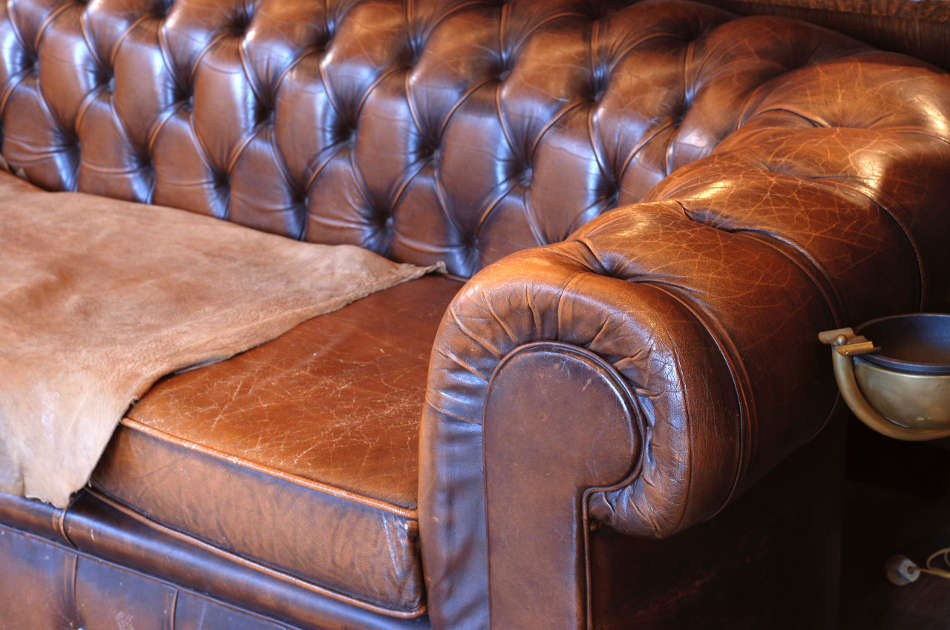If you have a leather sofa in your home, chances are you love the look and feel of it. Leather sofas add a touch of elegance and sophistication to any living space. However, as with any furniture, leather sofas are not immune to wear and tear. Understanding how to prevent and repair wear and tear on your leather sofa can help it last for many years to come.Leather Sofa Wear and Tear: What You Need to Know
If your leather sofa has started to show signs of wear and tear, don't panic. There are some easy DIY tips you can follow to repair it and bring it back to its former glory. First, assess the damage. If there are scratches or scuffs on the surface, you can use a leather conditioner or cream to buff them out. For more serious damage, such as tears or holes, you may need to use a leather repair kit or call a professional for help. Always test any products on a small, inconspicuous area first to ensure they won't damage the leather.How to Repair Wear and Tear on a Leather Sofa
The best way to deal with wear and tear on your leather sofa is to prevent it from happening in the first place. One of the easiest ways to do this is by placing a throw or blanket over the sofa to protect it from spills, pet hair, and other potential damage. You can also rotate the cushions regularly to distribute weight evenly and avoid excessive wear on one side. Finally, avoid placing your leather sofa in direct sunlight, as this can cause the leather to fade or crack over time.Preventing Wear and Tear on Your Leather Sofa
If you have a busy household with kids and pets, you may want to consider investing in a leather sofa that is specifically designed for high traffic areas. Look for sofas with high-quality, top-grain leather, which is more durable and resistant to wear and tear. You can also opt for a sofa with a distressed or textured finish, as this can help camouflage any scratches or imperfections that may occur over time.Best Leather Sofa for High Traffic Areas
Regular cleaning and maintenance can go a long way in preventing wear and tear on your leather sofa. Start by vacuuming the sofa regularly to remove any dust, dirt, and debris that can cause scratches. Then, use a damp cloth to wipe down the surface and remove any stains. For tougher stains, you can use a mild soap and water solution, but be sure to test it on a small area first. Finally, use a leather conditioner or cream to keep the leather moisturized and prevent it from drying out and cracking.How to Clean and Maintain Your Leather Sofa to Prevent Wear and Tear
When shopping for a leather sofa, it's important to understand the different types of leather available. Top-grain leather, as mentioned earlier, is the most durable and resistant to wear and tear. Split-grain leather is thinner and less durable, and bonded leather is made from leftover scraps of leather that are bonded together. Full-grain leather is also a good option, as it is natural and has not been sanded or altered in any way.Understanding the Different Types of Leather for Sofas
If you're feeling handy, there are some DIY solutions you can try to fix wear and tear on your leather sofa. For scratches and scuffs, you can use a mixture of olive oil and vinegar to buff them out. For small tears or holes, you can try using a leather glue or patching kit. However, it's important to note that these DIY solutions may not always produce the best results, so if you're unsure, it's best to call a professional for help.DIY Tips for Fixing Wear and Tear on Your Leather Sofa
Aside from regular cleaning and maintenance, there are other ways you can protect your leather sofa from wear and tear. One option is to use a leather protector spray, which can help repel spills and stains. You can also consider investing in arm covers or furniture covers to protect the most commonly used areas of the sofa. Additionally, avoid leaving sharp objects or heavy items on the sofa, as these can cause scratches or tears.How to Protect Your Leather Sofa from Wear and Tear
No matter how well you take care of your leather sofa, there may come a time when it's beyond repair and needs to be replaced. Some signs that it's time to say goodbye to your old sofa include excessive cracking, peeling, or tearing of the leather, a sagging or lumpy seat, and a musty or unpleasant smell. While it may be difficult to part with your beloved leather sofa, sometimes it's necessary to invest in a new one for the sake of comfort and aesthetics.Signs It's Time to Replace Your Leather Sofa
When shopping for a new leather sofa, it's essential to consider your lifestyle and how the sofa will be used. If you have kids and pets, you may want to opt for a darker colored leather or a sofa with a distressed finish to hide potential wear and tear. If you entertain frequently, a larger sofa with enough seating space may be a better choice. It's also important to keep in mind your budget and the quality of the leather when making your decision. In conclusion, while leather sofas are beautiful and luxurious, they do require some extra care and attention to prevent and repair wear and tear. By following these tips and taking proper care of your leather sofa, you can ensure it remains a centerpiece in your home for many years to come.Choosing the Right Leather Sofa for Your Lifestyle
Why Leather Sofas are the Perfect Choice for Wear and Tear

Leather is Durable and Long-Lasting
 When it comes to choosing furniture for your home, durability and longevity are key factors to consider. After all, you want your investment to last for years to come. This is where
leather sofas
shine. Leather is a natural material that is known for its strength and durability. Unlike other fabrics, leather is less likely to rip or tear, making it the ideal choice for homes with children and pets. In fact, a well-maintained leather sofa can last for decades, retaining its shape and beauty over time.
When it comes to choosing furniture for your home, durability and longevity are key factors to consider. After all, you want your investment to last for years to come. This is where
leather sofas
shine. Leather is a natural material that is known for its strength and durability. Unlike other fabrics, leather is less likely to rip or tear, making it the ideal choice for homes with children and pets. In fact, a well-maintained leather sofa can last for decades, retaining its shape and beauty over time.
Easy to Clean and Maintain
 Another benefit of
leather sofas
is their easy maintenance. Unlike other fabrics that require regular vacuuming and spot cleaning, leather can simply be wiped down with a damp cloth to remove any spills or stains. This is especially beneficial for families with young children who are prone to making messes. Leather is also resistant to dust and allergens, making it a great choice for those with allergies or respiratory problems. With minimal effort, your leather sofa will continue to look like new, even with daily use.
Another benefit of
leather sofas
is their easy maintenance. Unlike other fabrics that require regular vacuuming and spot cleaning, leather can simply be wiped down with a damp cloth to remove any spills or stains. This is especially beneficial for families with young children who are prone to making messes. Leather is also resistant to dust and allergens, making it a great choice for those with allergies or respiratory problems. With minimal effort, your leather sofa will continue to look like new, even with daily use.
A Timeless and Versatile Design
 In addition to its practical benefits,
leather sofas
also offer a timeless and versatile design that can enhance any living space. Leather comes in a variety of colors and finishes, allowing you to choose a piece that complements your existing decor. Whether you prefer a classic, traditional style or a more modern look, there is a leather sofa to suit your taste. Plus, leather tends to improve with age, developing a beautiful patina that gives it a unique character and charm.
In conclusion, when it comes to
wear and tear
, leather sofas are the perfect choice for any home. With their durability, easy maintenance, and timeless design, they offer a practical and stylish solution for families looking for long-lasting furniture. So why settle for a fabric sofa that will wear and tear over time? Invest in a leather sofa and enjoy its beauty and functionality for years to come.
In addition to its practical benefits,
leather sofas
also offer a timeless and versatile design that can enhance any living space. Leather comes in a variety of colors and finishes, allowing you to choose a piece that complements your existing decor. Whether you prefer a classic, traditional style or a more modern look, there is a leather sofa to suit your taste. Plus, leather tends to improve with age, developing a beautiful patina that gives it a unique character and charm.
In conclusion, when it comes to
wear and tear
, leather sofas are the perfect choice for any home. With their durability, easy maintenance, and timeless design, they offer a practical and stylish solution for families looking for long-lasting furniture. So why settle for a fabric sofa that will wear and tear over time? Invest in a leather sofa and enjoy its beauty and functionality for years to come.





































































/Stocksy_txp2a260f7fTKz100_Medium_1914428-5b23af0b43a1030037dea83e.jpg)


















